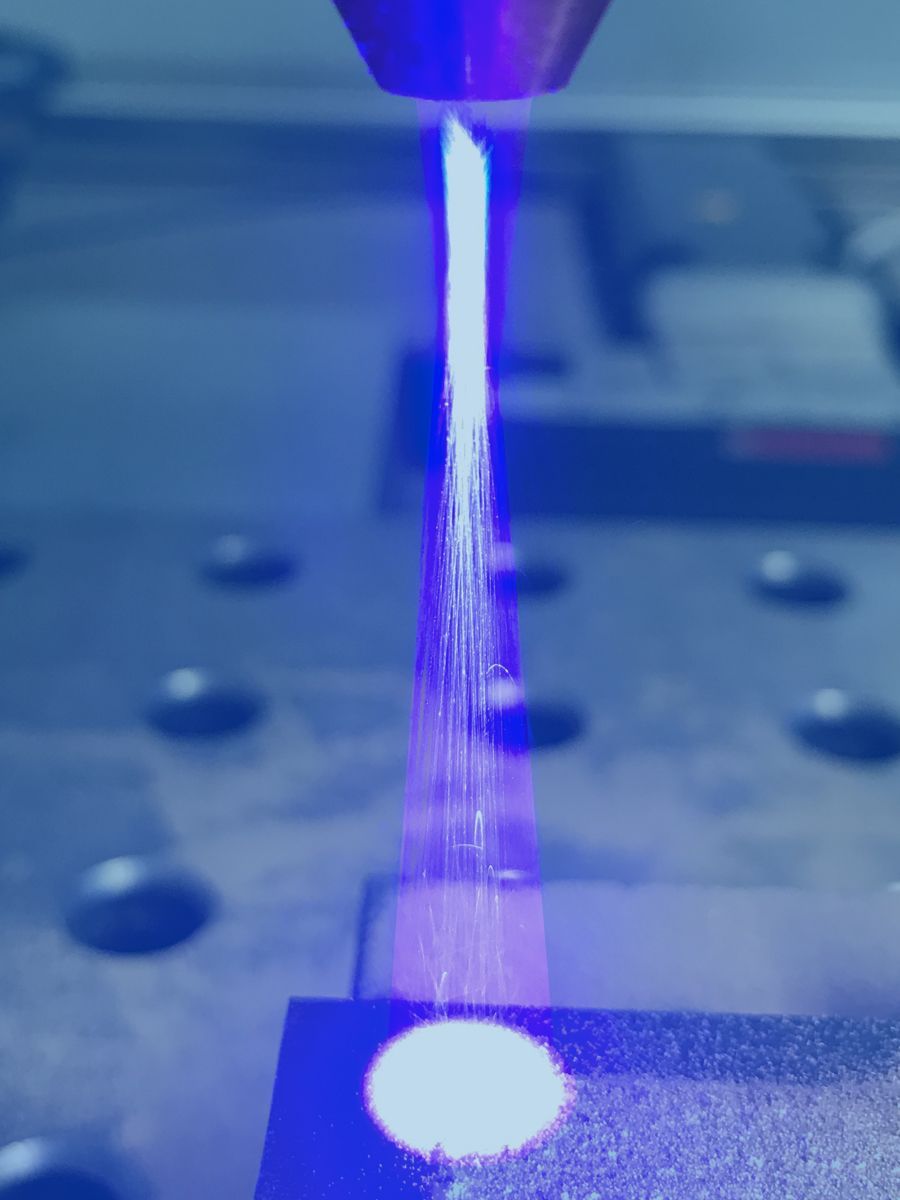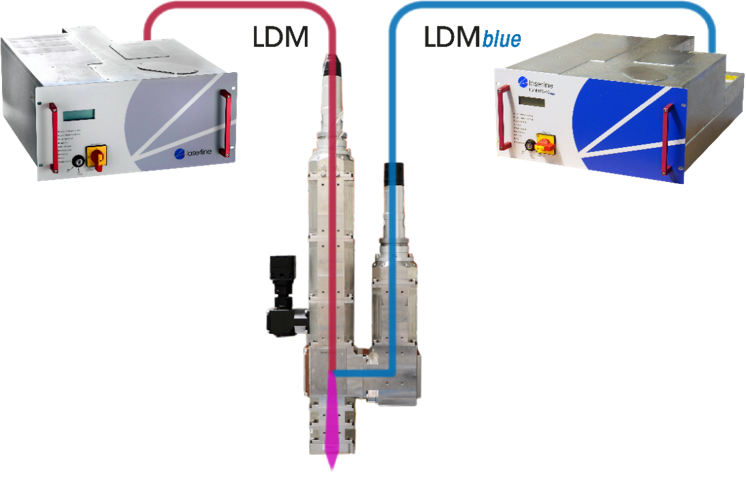Use of Blue Lasers in the Industry
Within three years and supported by the german government research programme EffiLAS (Efficient high-power laser beam sources) a blue kilwatt diode laser could be built and optimized for the industrial application fields. This globally unique development opens a new segment in laser technology: the processing of materials with laser radiation in the visible wavelength range.
In many industrial applications, infrared lasers have achieved excellent results. However, for the processing of nonferrous metals, especially copper, the infrared beam is less suitable. An essential reason is the low absorption of the laser beam by nonferrous metals in this wavelength range. Because of this, welding processes often run instable while welding mistakes in production lead to rejects. To gain a high absorption rate, the use of blue light with a wavelength of 450 nm is ideal. The multiple higher absorption facilitates high quality and even welding results in the laser processing of copper. The availability of the blue laser beam opens new application possibilities. Not only for the laser processing of nonferrous metals like copper or gold, but also for the jointing of different metals.
Especially in the field of regenerative energies and alternative drives, there is a new potential for the use of blue lasers in production. For example, around eight kilograms more copper is processed in the manufacture of electric cars than in passenger cars with combustion engines. This is a small value, but in total it offers a wide range of possible applications for blue lasers. For instance, in the manufacture of batteries, ten micrometers thin copper foils are joined together or joined with other metals. This is made possible for the first time by the use of high-power diode lasers with a blue light spectrum.
Significantly more copper is needed in the construction of wind turbines. Large offshore wind turbines use up to 30 tons of copper – here, too, the use of lasers is conceivable in the future. Due to the high seam quality, the process is also extremely well suited for applications in electrical engineering – especially in the manufacture of components in power electronics, where the joints must be particularly temperature-resistant.
In addition to electronic applications, the new wavelength of the blue laser also enables gold to be processed, making new applications in jewellery production possible. As technical development progresses, numerous other applications are expected to open up in the near future – starting the continuation of the rapid technological innovation in high-power diode lasers for industrial production in the new wavelength range.
Hybrid Laser Process: Blue + NIR
The combination of the blue laser radiation from LDMblue with a laser emitting in the infrared wavelength range leads to very stable and almost spatter-free keyhole welding processes. The blue laser stabilizes the process even while welding in the deep penetration mode. The NIR laser provides the additional energy. Laserline has developed special hybrid optics that combine the blue and NIR laser beams.

Read more about the hybrid laser process in our journal article on welding copper components.






